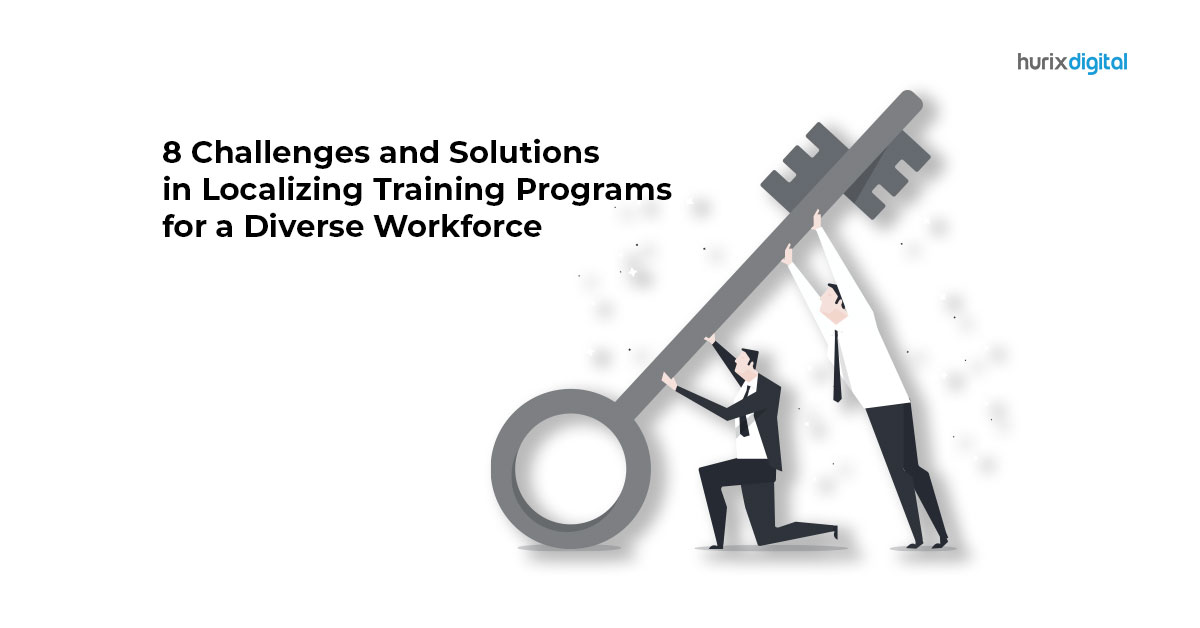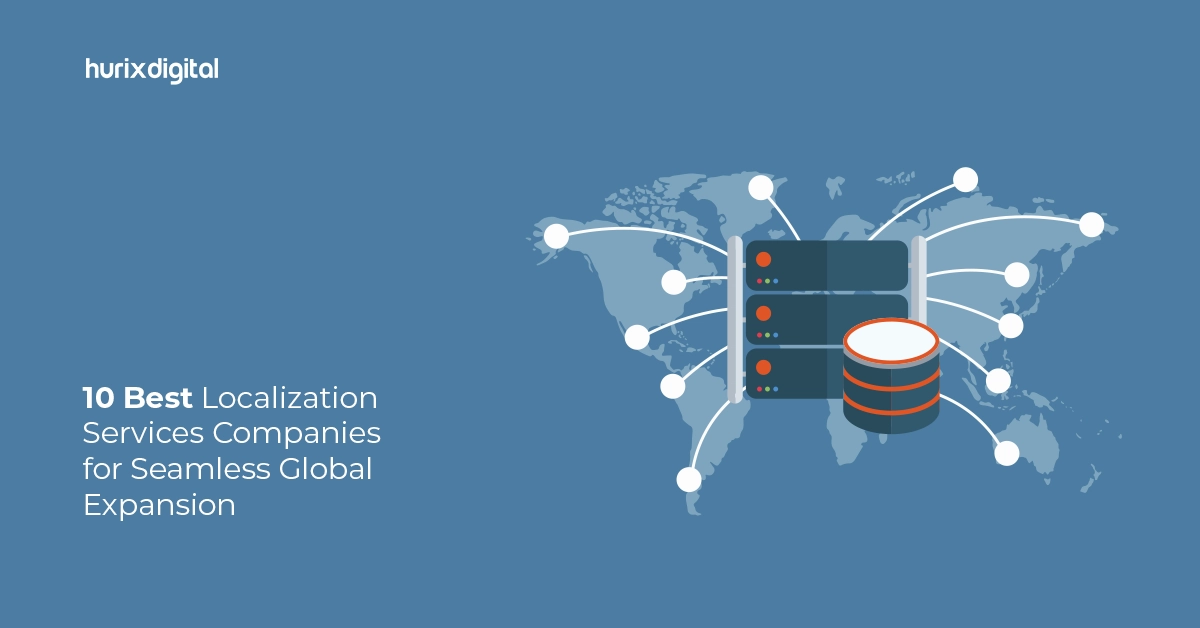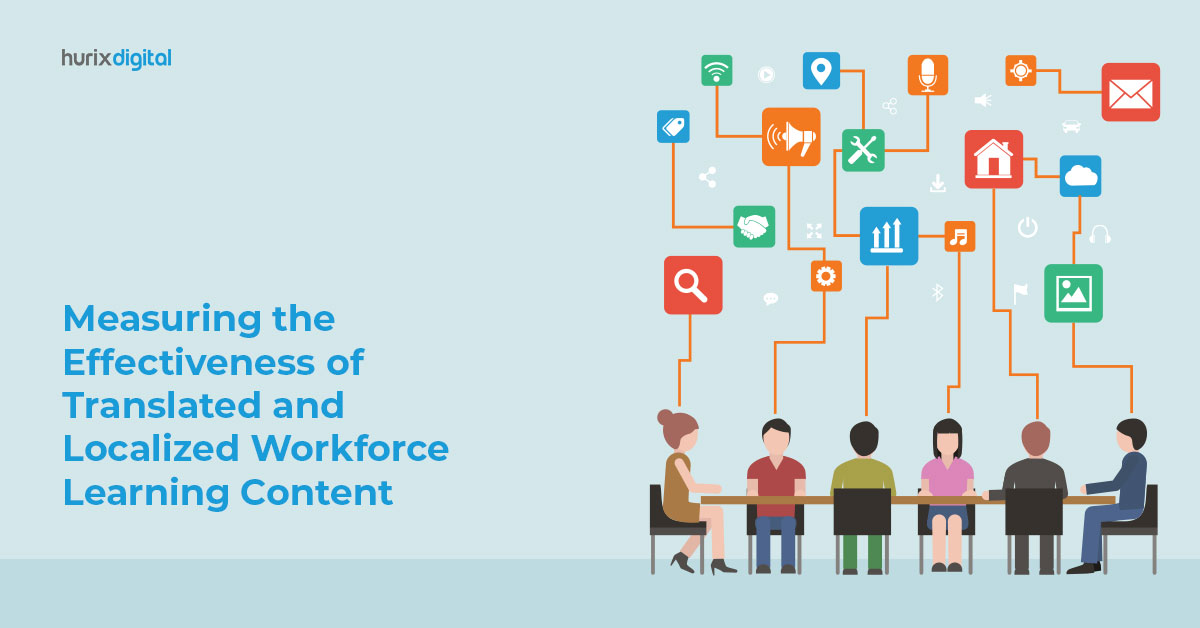
8 Challenges and Solutions in Localizing Training Programs for a Diverse Workforce
Summary
This blog post addresses challenges and provides solutions for localizing training programs for a diverse workforce.
eLearning localization is the key element for building an inclusive work environment. While planning for training localization, it is important to understand and address the community’s cultural values and preferences. By tailoring the content, businesses can bridge cultural gaps and promote understanding among a diverse workforce.
Efforts to increase inclusion and diversity in the workplace have been growing rapidly. A recent report states that in 2020 companies spent approximately $9.4 billion on Diversity, Equity, and Inclusion programs. It is also expected to reach a value of $24.3 billion by 2030.
eLearning localization services are a great investment as they can help organizations reach such goals. This article discusses the challenges and solutions that companies should know about while localizing training programs.
Table of Contents:
- What is the Importance of Diversity in Localizing Training?
- Top 8 Challenges And Solutions of Diversity in Localizing Training Programs
- Understanding The Language Barrier
- Multiple Opinions Make it Difficult To Reach Consensus
- Unconscious Bias
- Implementation Challenges
- Accessibility for Diverse Individuals
- Failure to Understand How the Training is Relevant
- Dispersed Workforce Makes the Learning Process Boring and Difficult
- Evaluation of Non-Text Elements
- Conclusion
What is the Importance of Diversity in Localizing Training?
There are multiple reasons and benefits of diversified translation and localization services, and these play a crucial role in the functioning of an organization.
- Company Culture: A global workforce needs enhanced training which will create a better company culture. This will lead to fairer decisions and optimal utilization of all kinds of resources.
- Equality and Awareness: No matter what language they speak or the culture they belong to, every employee gets an equal opportunity to improve their skills. This will help learners to reach their full potential and makes it easier to understand certain concepts.
- Benefits Both Employees and Employers: Employers can expect a maximum return on investment due to increased productivity of employees post-training. On the other hand, employees can improve their skills and retention power.
Also Read: Exploring the Latest Trends in Localization Technology
Top 8 Challenges and Solutions of Diversity in Localizing Training Programs
Take a look at the following challenges faced by businesses while planning for a diversified workforce.
1. Understanding the Language Barrier
Working with employees from across the world can lead to multiple language-related problems. Messages fail to reach the right audience if there is no direct translation available.
Failure to communicate properly can also affect the functioning of the organization as it creates gaps in the decision-making process. Nonverbal communication and body language also differ from culture to culture.
Every component of language should be acknowledged to meet multicultural goals. These include words, body language, eye contact, tone, and pitch.
2. Multiple Opinions Make it Difficult to Reach Consensus
Diversity can sometimes make it difficult to reach a final decision. With different backgrounds, experiences, and opinions, it becomes difficult to reach a consensus, and many problems go unnoticed.
Solutions to problems also go unnoticed due to multiple innovative ideas and cultural or gender differences. Understanding and acknowledging the complexities is an important step while localizing training.
A decision-making committee should be formed to make the final decisions. In situations where a consensus needs to be made, the committee of high-performing individuals can analyze and identify the best option.
3. Unconscious Bias
Unconscious bias, stereotypes, and generalizations in the workforce are often due to the lack of knowledge about diversity. With individuals working from different parts of the world, addressing and acknowledging cultural and other differences should be the core goal of a business.
Discuss the scenarios of physical, psychological, and sexual harassment to create awareness. Educate employees about the legal consequences of harassment and the ways to report it.
4. Implementation Challenges
Tailoring content based on cultural differences and experiences can be quite difficult. It can also be taken as a compliance requirement instead of a genuine commitment.
This leads to backlash and resistance from the employees. Unrealistic expectations can also lead to negative outcomes like ethical dilemmas and legal liabilities in case of rights violation.
A well-designed program that is aligned with company goals should be delivered. While implementing training programs, a consistent schedule must be followed. For predictable results, make sure to keep the training running for the right period.
5. Accessibility for Diverse Individuals
When training is not accessible to every participant, it can lead to an overwhelming response along with complaints. The delivery of training is another issue for learners.
Not everyone learns best by watching or reading, while for some, it is a must. Training must be carried out considering the preparedness of every individual.
Consider the learning process and journey of employees while drafting the training program. Creating content that is suited for both real and virtual environments is crucial when it comes to accessibility.
6. Failure to Understand How the Training Is Relevant
Training programs often fall short when the company fails to be clear about the relevance of the training. Maximize the success of a training program by discussing the goals, expectations, and the need for training.
Managers and executives should take the initiative to show support and set the tone for the organization. Leaders are the drivers of change, and by sharing the experience of every individual, companies can educate employees about diversity.
7. Dispersed Workforce Makes the Learning Process Boring and Difficult
With a dispersed workforce, time zones are a major issue. Traditional training programs fail to produce the desired results because of logistical concerns. Employees often find it difficult to contact a senior regarding problem resolution.
Stakeholders, leaders, clients, and managers should take part in the implementation and evaluation process. This will foster a culture of inclusion across every team and individual. Learning content should be available in multiple forms and must have flexible learning schedules.
Use tools in discussion sessions to bring the team together. Gamification is one way to make remote training fun, and it makes the learners feel like a part of the team.
8. Evaluation of Non-Text Elements
Certain non-text elements like images and multimedia components can confuse users. Images of men or women in a target market where it is not relevant can seem inappropriate. If the non-textual content is not selected properly, it can be considered offensive, and racist and lead to negative feedback.
Whether it’s music, images, videos, or animation, content should be carefully analyzed before implementation of training. In this way, organizations can ensure a balance between respecting cultural and organizational values.
Also Read: Translating eLearning Platforms: Considerations and Solutions
Conclusion
Diversity must be the ultimate priority of every business. Pair the training program with mentorship events and diversified recruitment programs. To meet the goals, try choosing the localization services companies to offer.
Training should be tailored to the needs of the company and tracked for desired results. When it comes to localizing training, Hurix Digital is the best partner for all kinds of company goals.
Work with experts to create tailored content and fill the gaps in cross-cultural communication. Contact our team of experts today!

Performance, Results, Growth, and Life-Long Learning define my professional life. I am passionate about making workplace learning planful, purposeful, and impactful. I take pride in partnering with clients and bringing them the best in learning design and creating solutions that address business challenges.







